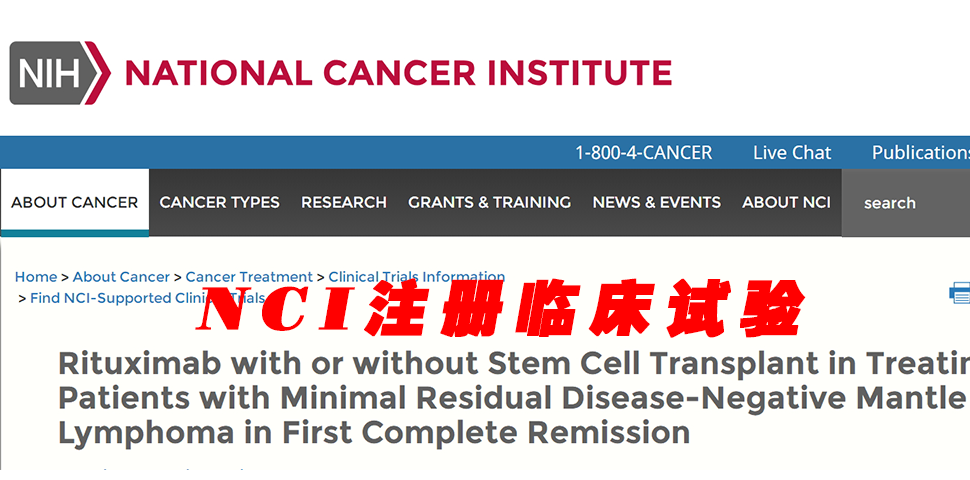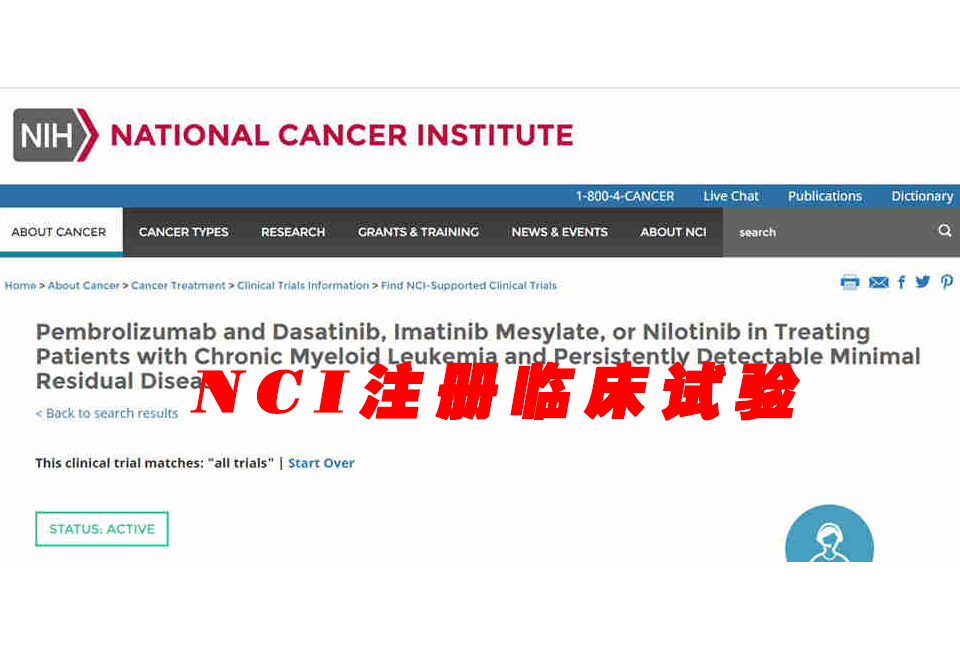- 如有疑问,请联系电邮
- customer@ihealth66.com
最新临床试验:利妥昔单抗联合或不联合干细胞移植治疗一期完全缓解的微小残留病阴性套细胞淋巴瘤

USNEWS:9种习惯可降低患老年痴呆症风险
2019年5月10日
USNEWS:音乐如何帮助老年痴呆症患者?
2019年5月15日这是经美国国家癌症研究所批准的一项多中心随机对照 III期临床试验,目的是研究对比干细胞移植后使用利妥昔单抗与不进行移植术单独使用利妥昔单抗,治疗初次完全缓解的、微小残留疾病阴性的套细胞淋巴瘤的疗效。单克隆抗体,如利妥昔单抗,可能干扰癌细胞生长和扩散。干细胞移植前进行化疗有助于杀死体内的任何癌细胞,并有助于在患者骨髓中腾出空间让新的造血细胞(干细胞)生长。套细胞淋巴瘤患者治疗后,从血液中收集干细胞并储存;再进行下一阶段的化疗前,为干细胞移植准备骨髓;再将干细胞送回患者体内,以替换化疗破坏的造血细胞。给予利妥昔单抗加或不加干细胞移植治疗套细胞淋巴瘤的效果可能更佳。
该临床试验在全美217家医院进行开展。
This randomized phase III trial studies rituximab after stem cell transplant and to see how well it works compared with rituximab alone in treating patients with in minimal residual disease-negative mantle cell lymphoma in first complete remission. Monoclonal antibodies, such as rituximab, may interfere with the ability of cancer cells to grow and spread. Giving chemotherapy before a stem cell transplant helps kill any cancer cells that are in the body and helps make room in the patient’s bone marrow for new blood-forming cells (stem cells) to grow. After treatment, stem cells are collected from the patient’s blood and stored. More chemotherapy is then given to prepare the bone marrow for the stem cell transplant. The stem cells are then returned to the patient to replace the blood-forming cells that were destroyed by the chemotherapy. Giving rituximab with or without stem cell transplant may work better in treating patients with mantle cell lymphoma.
Trial IDs
Secondary IDs NCI-2016-01403
Clinicaltrials.gov ID NCT03267433
Age: 18 to 70 years
Gender: Male or Female
Location: 217 locations





